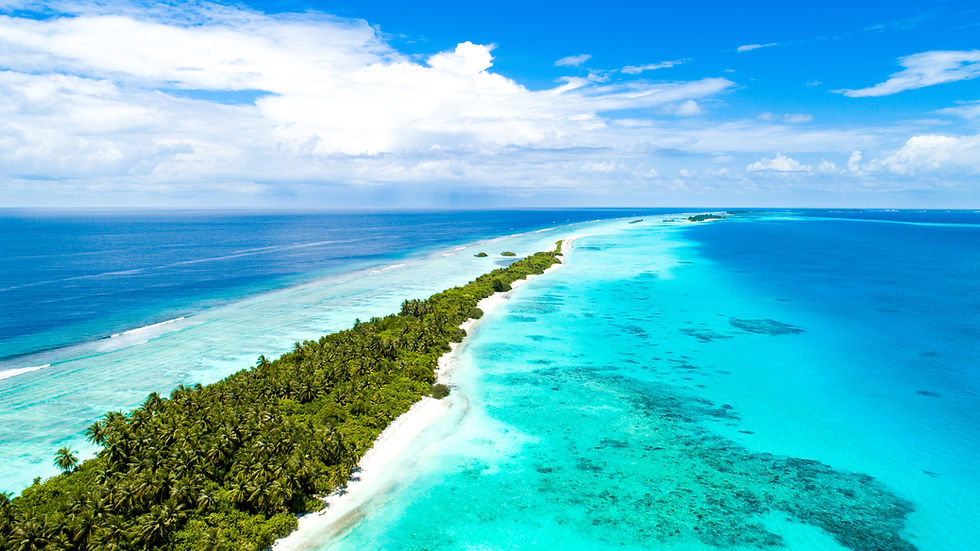
Addu Atoll, previously known as Seenu Atoll, is the southernmost – i.e., the most
tropical – atoll in the Maldives. In fact, it almost sits right on the equator – and it’s
actually in the southern hemisphere, so watch your toilets flush in the opposite
direction! (Not really :P) Addu Atoll includes five inhabited islands, the
westernmost of which are connected by a 16-kilometre road that passes right over
the water and provides a formidable breakwater to the changing tides; water levels
can vary by half a metre. More excitingly, it’s home to the country’s second-largest
wetlands: the Eydhigali Kilhi wetlands, and the protected Koattey area on
Hithadhoo Island.
The Addu Atoll – and Addu Nature Park – are definitely worth a visit. Cycle through
the dense and vibrant green vegetation of the beautiful wetlands. Canoe or kayak
through land so low to the water that the ocean is always a force to be felt, as
“inland” as you might get! Go birding and see the migratory birds, and even bats,
who stop over in this tropical paradise. And spend some time scuba-diving or
snorkeling to see the fantastic marine life!
Let’s cover some of the main islands in this equatorial heaven:
● Hulhumeedhoo, or Hulhudhoo-Meedhoo, is an absolute must-see. It’s the
fifth-largest island in the Maldives, but still – despite this – barely the land area
of New York's Central Park. And it’s one of the country’s oldest settled islands,
first inhabited between 500 and 1000 years before the birth of Christ. Rich in
history, and with a beautiful Indian Ocean culture, visiting here is a must.
● Hithadhoo is the second-largest island in the Maldives, and contains the
administrative centre of the Atoll, and of the capital city – Addu city – that
stretches across it. With a rich history, and structures like the ruins of an old fort
at Koattey, the origins of which are still unclear, even to experts. In addition, the
Eydhigali Kilhi wetlands are here, an essential part of the Addu Nature Park. You
can see wild flora and fauna galore, both above and beneath the sparkling
water’s surface. It’s definitely a must-see stop on a Maldives tour.
On the island of Gan, stay right at the equator in a resort complete with all the
amenities. From here, you can easily take a boat ride to switch into the other
hemisphere, and then switch back – and back again if you have a mind to! Other
good news is that there’s an international airport, with flights to Sri Lanka, if you
want to start or end your trip here rather than Malé.
● Maradhoo, located in the middle of the road that links the atoll, is an island with
a fair amount of historical significance during WWII, used by the British (who
then owned the Maldives) as a staging area for naval warfare. Furthermore, due
to its designation as a “non-typical” Maldivian tourist place, the sorts of
experiences that you’ll have here can be quite different than at the resorts of
Malé.

Comments